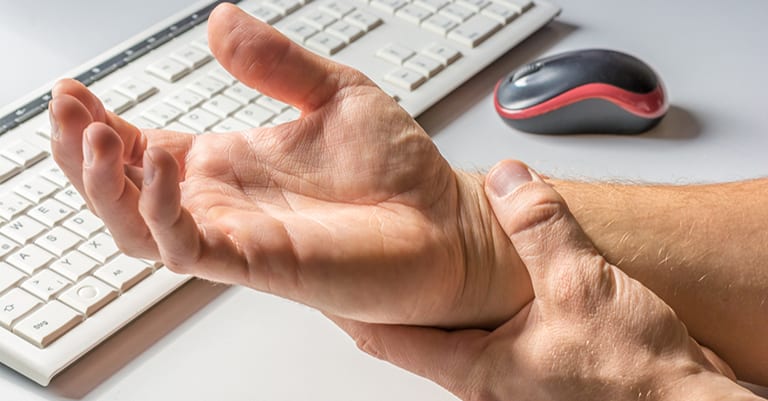When treating patients with carpal tunnel syndrome (CTS), doctors of chiropractic can employ a variety of options to reduce pressure on the median nerve. While this can include dietary recommendations (to reduce inflammation), adjustments to address dysfunction elsewhere along the course of the median nerve, or even working with other healthcare providers to manage conditions that contribute to CTS (like diabetes), treatment will often focus on the wrist itself.
One such approach is referred to as neurodynamic techniques, or mobilization. In a study involving 103 patients with mild-to-moderate CTS, those who received treatment twice a week for ten weeks experienced greater improvements with respect to pain reduction, symptom severity, functional status, and nerve function than participants in a control group who received no treatment. The authors concluded, “The use of neurodynamic techniques in conservative treatment for mild to moderate forms of carpal tunnel syndrome has significant therapeutic benefits.”
This finding is supported by two previous studies that found the use of manual therapies on the wrist can alter the shape of the carpal tunnel itself and allow more room for the tendons, blood vessels, and median nerve.
Additionally, studies show that when the wrist moves beyond a neutral position, it can alter the shape of the carpal tunnel and increase pressure on its contents. In a healthy wrist, full extension/flexion can double pressure in the carpal tunnel; however, for CTS patients, the pressure can increase as much as 600%. That’s why many treatment guidelines recommend wearing a wrist splint (especially at night) and modifying work and life activities to keep the wrist in a neutral position as much as possible.
The good news is that in most cases of CTS, patients will benefit from a conservative treatment approach; however, achieving a successful outcome can be more difficult if the patient delays treatment. That’s why it’s important to consult with your doctor of chiropractic when you experience the signs and symptoms associated with CTS (pain, numbness, tingling, or weakness in the hands or fingers) sooner rather than later.



